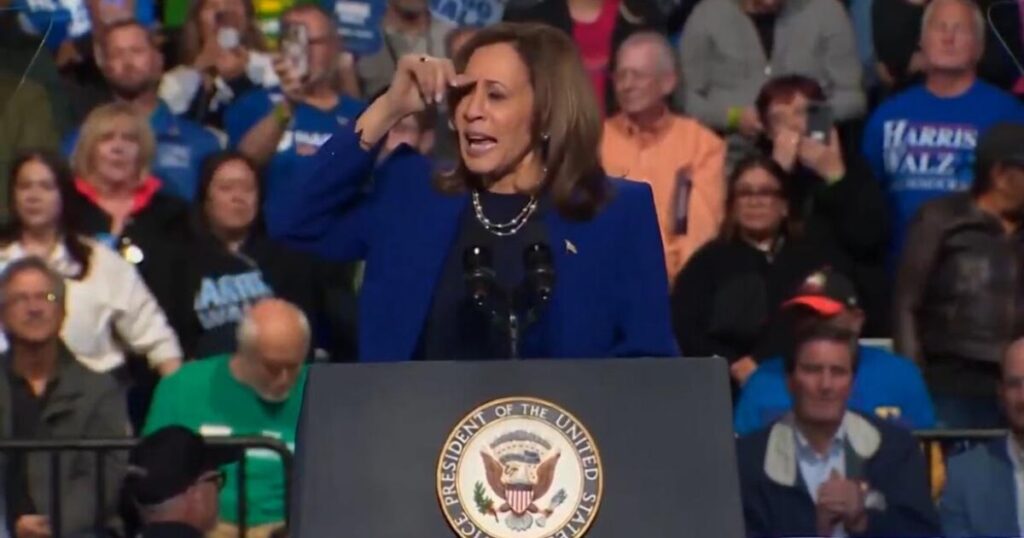On Halloween, Kamala Harris held a campaign rally in Phoenix, Arizona, amidst the growing pressure of the presidential race against Donald Trump. This rally came just days before the critical Election Day, where Harris aimed to make a compelling final appeal to voters in this swing state. However, the atmosphere was marked by disruptions as protestors interrupted her speech, highlighting an increasingly tense campaign environment. The scene at the Talking Stick Resort Amphitheater was charged, as supporters gathered, albeit in a seemingly diminished turnout, raising questions about her enthusiasm and appeal among voters.
During the disrupted rally, Harris struggled to maintain her composure as she addressed the crowd. Her insistence on fighting for democracy became a recurring theme in her statements. “Let me say something here! We’re here because we are fighting for a democracy!” she exclaimed, attempting to rally her supporters. Nonetheless, her repeated pleas for understanding “the difference” in this election appeared to resonate poorly, causing her to come across as frustrated and disorganized. This pattern of stumbling through speeches, especially amid interruptions, fueled growing concerns about her campaign effectiveness as Election Day approached.
The rally witnessed not only the interruption from protestors but also the removal of a Trump supporter who challenged Harris during her speech. This incident was emblematic of the larger campaign tensions, as opposing supporters clashed and disrupted her message. In a moment reminiscent of Hillary Clinton’s struggles during the 2016 election cycle, many observers noted that Harris’s rhetoric seemed increasingly frantic. Critics highlighted her inability to effectively engage with the opposition and maintain control over her campaign narrative, underscoring a troubling similarity to Clinton’s experiences.
As coverage of Harris’s rally circulated on social media, comparisons to Clinton’s infamous campaign rhetoric emerged. Some commentators drew parallels between the emotional energy observed at Harris’s speeches and the frustrated delivery that had characterized Clinton’s campaign. For instance, one observer mentioned, “All I see was an angry looking woman,” emphasizing that both candidates resorted to shouting at their supporters in what appeared to be desperate attempts to galvanize enthusiasm for their respective campaigns. Such commentary fed into a narrative suggesting that Harris, like Clinton, was losing her grip on the momentum necessary for a successful presidential run.
In the days leading up to the election, the stakes were not just about securing votes, but also about overcoming the narrative surrounding Harris as a candidate in distress. Her performance at the Phoenix rally fed skepticism about her capabilities to unify a fractured party and appeal to a broader electorate. With Trump looming as a formidable opponent, Harris’s difficulties contributed to a perceived decline in her electoral viability, echoing the sentiments that previously plagued Clinton’s 2016 candidacy. The unsettling similarities in their campaigns have sparked discussions about effective political messaging, especially under the pressure of tight timelines and high expectations.
Ultimately, the events in Phoenix serve as a microcosm of the challenges facing Harris as she endeavors to navigate a polarized political landscape. The incessant interruptions, her visible frustration, and the comparisons to past electoral failures illustrate a critical juncture for her campaign. With Election Day approaching, Harris’s ability to rally her supporters and deliver a clear, confident message will be essential not only for her own political future but also for the Democratic Party’s ambition amid a contentious race against Trump and a divided electorate. The intensity of the moment highlights the sophisticated dynamic of campaigning in modern politics, where clarity and composure can significantly influence outcomes at the ballot box.

